EAGR to Speak for the Trees: Let’s Get Our Tree Facts Straight!
Let’s Get Our Tree Facts Straight!
By Melissa Grieco, Guest Colmnist
[The column is, in part, a response to Matt Fahey's column last week.]
A recent New York Times op-ed article entitled “Why Trees Matter” stated that “We have underestimated the importance of trees. They are not merely pleasant sources of shade but a potentially major answer to some of our most pressing environmental problems. We take them for granted, but they are a near miracle.”
Here in Rye, trees offer a vast bounty of beauty, shade, and environmental boon. Trees are a natural ally in reducing the severity of Rye’s flooding problem which has become worse over the past decade. It is estimated that the average tree in the Northeastern U.S. absorbs over 1,900 gallons of stormwater runoff per year. Per the Northeast Community Tree Guide: Benefits, Costs, and Strategic Planting (published by the U.S. Forest Service), "Studies that have simulated urban forest effects on stormwater runoff have reported reductions of 2 to 7 percent…(Reductions of) stormwater runoff are substantial for all tree types.”
Sadly, our trees are threatened from every angle – whether it be from invasive plants and insects, construction and development, a changing climate, or those who foolishly argue that individual rights trump any reasonable regulation on behalf of the greater municipal common good. The results of a U.S. Forest Service Study National results that were released in February 2012 indicate that “tree cover in urban areas of the United States is declining at a rate of about 4 million trees per year …Tree cover in 17 of the 20 cities analyzed in the study declined while 16 cities saw increases in impervious cover, which includes pavement and rooftops.” The study included a cost/benefit analysis that showed that “The benefits derived from urban trees provide a return three times greater than tree care costs, (including) as much as $2,500 in environmental services such as reduced heating and cooling costs during a tree’s lifetime.”
(PHOTO: Grieco at the last city council meeting.)
The Environmental Advocacy Group of Rye (EAGR), the Conservation Commission/Advisory Council and members of the Planning Commission have been working on amendments to the City of Rye tree ordinance (Chapter 187) since 2008. As part of this process, we have studied and reviewed the tree ordinances of many neighboring Westchester municipalities including Mamaroneck, Tuckahoe and Irvington. Our amendments would bring our tree ordinance in-line with those of our neighbors who are better protecting their trees from unnecessary removals and would lead to residents thinking twice before cutting down a large, healthy tree. Over the span of a couple of weeks in 2011, we collected over 137 signatures from Rye residents in support of the improved tree ordinance. Leading up to the opening of the current public hearing, the City Council has received numerous emails in support of our proposed amendments that are public record and available for review.
A revised draft which includes EAGR’s proposed amendments is available from the City Manager’s office. Several specifics were factually misrepresented in a previous article published on this website including an assertion that residents “will be required to place funds equal to the cost of the tree removal in escrow pending the “adequate removal” of the tree. It is unclear where the author of said article obtained this incorrect information. The author also claims that this is a “new law” which is entirely untrue as our revisions are merely amendments to an existing law – Chapter 187 – which already regulates tree removals within private property setbacks and historic districts.
The author also states that private property rights are being infringed upon by the amendments. He fails to consider that the City of Rye already restricts countless private property actions including the type/height of fences we can erect; the number of floors we can put on our new homes; how large a house/addition we can build; and so on. Most of these restrictions to our property rights are accompanied by a mandatory application to the City with a requisite fee and fine if we do not comply. We tacitly accept these regulations upon becoming a property owner within the City of Rye.
Below is a correct and accurate summary of our proposals. EAGR hopes that better protection for our City’s trees will come to fruition in some way, shape or form. We urge all those in support of our amendments to attend the public hearing and voice their support through an email to the City Council at mayor@ryeny.gov or by saying a few words at the next City Council meeting on Wednesday, June 6th.
EAGR’s proposals:
- A $25 permit application (the same cost for current removals within property setbacks) will be required for removal of one or more trees with a Diameter at Breast Height (DBH) of eight inches or greater anywhere on private property. If a tree with DBH>8" is dead, diseased, dying or dangerous, permit application will be approved upon confirmation of the condition by the City of Rye Tree Foreman.
- The same removal criteria will apply to all City-owned property except for street right-of-ways.
- The Board of Architectural Review (BAR) will be pulled in to review a tree removal action involving four or more trees.
- Replacement tree plantings may be required as a condition of the granting of a removal permit.
- The planting of invasive species (as per the listing by Invasive Plant Atlas of New England (IPANE) and the USDA NRCS Plants Database) will be prohibited anywhere in the City.
- Utilities and other maintenance crews must adhere to the tree care and pruning standards of ANSI and ISA.
- The City Manager will have the authority to lift the need for removal permits for a reasonable period after a major weather event.


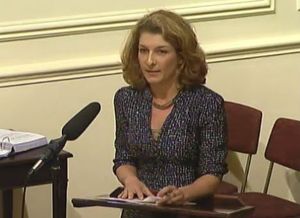
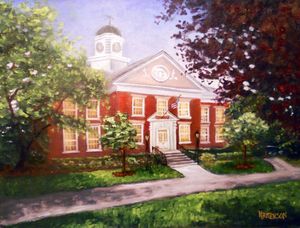
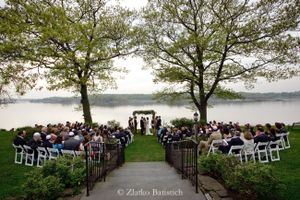
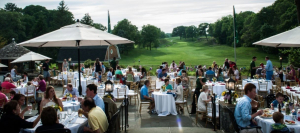
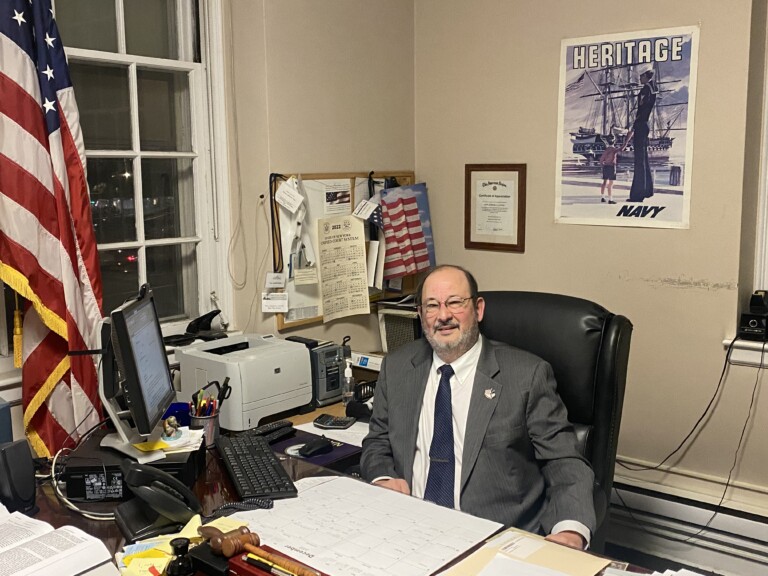

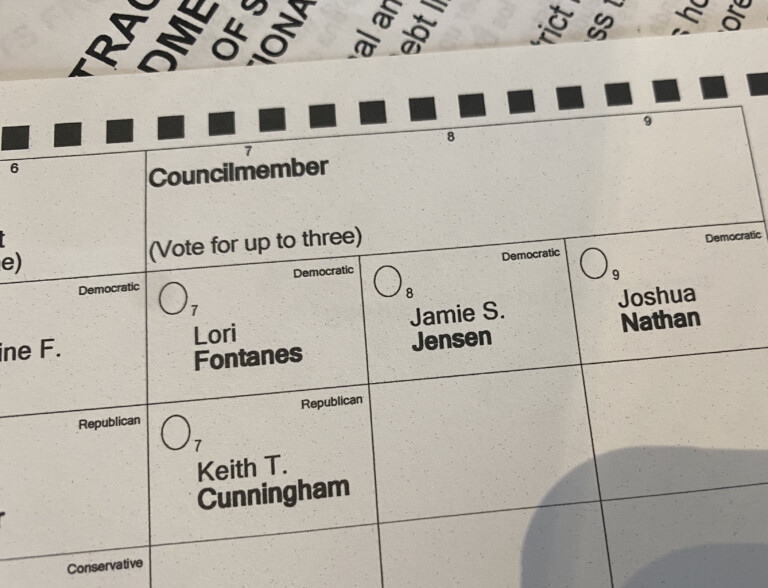
“…those who foolishly argue that individual rights trump any reasonable regulation on behalf of the greater municipal common good.”
Melissa Grieco nails it ~ Thomas Paine would approve.
Charmian the author here thinks French & Co. believe in and follow the existing laws of Rye. How misguided. She has much to learn.
https://www.lausdeo10580.com/lausdeo10580/2012/05/mayor-issued-bldg-permits-needs-no-variances-for-property-that-does-not-comply-with-zoning-code.html
But I’m not without sympathy for those who sustain “clear cutting” by short sighted neighbors. Six or more mature oaks were felled in 48 hours next door to us about 5 years ago. The homeowner was begged by neighbors to rethink before it was too late. No such luck. That place looks barren and stark to this day. And all of us around it have to live with it – not just him.
But I’m behind Matt Fahey in this one.
And when, after all, are Mr. French and Mr. Jovanovich tendering their resignations?
https://www.lausdeo10580.com/lausdeo10580/2012/04/city-of-rye-finds-9000-to-make-whistle-blower-vanish.html
And does the author know that the tree ordinance is being used here to help distract from the biggest potential municipal loss Rye taxpayer’s have ever sustained?
https://bit.ly/LvV7an
She should – and she should resent being used like this. Her cause has real merit.
Melissa –
I have not made any factual misrepresentations. My arguments were made directly from the proposal put forth to the council (which include the draft law as well as the City Planner’s impact assessment), as included in the agenda items from the May 23 City Council meeting. It also included public statements made at the meeting. But you miss my point entirely. I am not against trees, I am against the unnecessary infringement of property rights, and I’m concerned about the additional and unnecessary costs to the taxpayer. Read the City Planner’s own summary, wherein he states this change in the existing law will have no discernible benefit, but will have a very real cost to execute and enforce.
You also claim this is merely an amendment to the existing law which covers the setback on some properties. But the proposal steps into private property to dictate what should and should not be there… which is a new restriction that was not on the books before.
Furthermore, you claim that I fail to consider that the city already has “countless” restrictions. I don’t fail to consider this – it is a motivating factor in my concern that our property rights are constantly diminishing. In this case, it is to satisfy an amazingly small number of residents who may or may not have all the facts… 137, or less than 1 percent of the population, have signed a petition. In this case, count me as a 99 percenter. I’d like to have a greater input from the population at large.
While I really don’t see a pressing need for the proposed changes, I do see a very real need for the city to spend as carefully as possible. This proposal is simply wasting our time and our money, two resources that are in critically short supply these days.
Maybe the City Planner is wrong. I don’t believe there would be no benefit.
Where to start with this flawed plan :
1) Its a tax increase on Rye citizens . Lets stop charade of ” fees ” vs ” taxes ” . This is why French and a few other pretend Republicans are suddenly interested in this bad idea
2) 137 signatures is < 1% of the Rye population . If we produce 300 against can we make it go away ? 3) City workers cost 6 figures with all benefits and pension figured in . Lets assume Rye had 1,000 tree applications in a year . That would generate $25,000 in fees . I'd say it would be safe to say that to go out and look at 1,000 different trees to decide yes or no to grant permit to allow cutting of tree , to deal with blowback and lawsuits that would follow from citizens denied right to remove a tree that Rye will need at least 3 workers . So lets do the math : $25,000 of fees generated vs $300,00-$350,000 of all in costs for the workforce that will be needed to properly handle each permit . Taxpayers would be crucified . To make this process neutral to taxpayers , the tree fee needs to be raised to at least $300 per tree ( and we know how well that will go with taxpayers ) . Anything less and revenue shortfalls take place . The $25 fee per permit is a bad joke that hides the real cost to taxpayers 4) AS the New York Times noted recently , even healthy looking trees to the untrained eye can kill people ( https://www.nytimes.com/2012/05/14/nyregion/in-new-york-neglected-trees-prove-deadly.html?pagewanted=all ) . What city bureaucrat is a certified arborist to definitively be able to look at a tree a homeowner wants to take down to declare it fine/healthy and deny that homeowner the right ? Guess how big the law suit will be if Rye allows some volunteers or or ARB member to deny a tree removal permit and said tree was in fact a problem and it harms somebody when it falls ? Homeowners know when a tree is a problem . We see the limbs come down . To think Rye will assume the legal liability or denying homeowners the right to remove a tree they see as dangerous is positively insane and I will be there if/when this happens to tell the family that is hurt that the town officials were warned in advance the moral hazards of trying to do this without experts . Has French and crew priced out cost of hiring a certified arborist full time in order that a trained expert makes the call on a questionable tree vs some glorified garden club volunteer seeking to impose her vision of Rye on all or some complete novice on the ARB . ** As a word of caution to members of the ARB ? I’d quit before i’d render a decision that could endanger a child in Rye on tree removal . Thats not what serving on ARB is about .
5) Lawsuits: there can and will be numerous lawsuits filed as town denies people rights to manage trees on their property . has French and crew priced this in ? Do you really think Rye’s citizens will just roll over and play compliant lapdog if denied this right ? I see potential for a legal bill that could rival the insanity of 10yrs ago when equally clueless town leaders decided to take on Home Depot building in Port Chester ( never mind half of Rye is in store any given Saturday ) .
6) Rye does not need a ” Big Brother ” / ” Nanny State ” !! Trees are valuable items to Rye homeowners who tend to be rather successful people with above average intelligence . The City has survived 300+yrs without tree police and i see no evidence or proof provide by the folks pushing this bad idea of why its needed now ! Please give us 10 examples of actions taken by homeowners that harmed the community at large ?!? This excessive regulation is being provide with ZERO evidence a problem exists ! Can’t Republicans on town council grasp the simple axiom ” Don’t Try And Fix What Is Not Broken ” ?????
I would further add the majority of people behind this law did not vote for you / your party , Mr French . THis is bigger government looking to control more of our lives than needed generating ever larger tax bills for us overloaded taxpayers .
Its the nannystate we see everywhere in this country run amok . That the citizens are too stupid to manage their own affairs / property and the town will do it for them .
loks like MyRey hiccuped and lost much of what i posted
2) 137 signatures for this bill is less than 1% of Rye population . If we get 300 against the measure ( which could be done in a few days ) , can we make it go away ?
3) This plan will kill Rye taxpayers . Here is the math . Lets assume 1,000 tree permits requested in 2013 . THis would mean the new tree police team would need to make 1000 vists in a typical 240 day work year to examine the tree . Said workers would have to render a decision and notify homeowners . Is it safe to say a force of about 3 would be needed ? Rye workers are now a 6 figure cost with pension and benefits included . So 3 workers is a cost of $300,000-$350,000 to manage the 1,000 permits and against this we’d get $25,000 in fee revenue to pay the workers . Can you say HORRENDOUS FOR TAX PAYERS .
4) NY Time recently wrote a story on all the lawsuits pending and the huge costs associated from trees and tree limbs falling on the citizenry . But the key takeaway of the article was that many of the tree incidents involve trees that look fine to untrained eye and how it takes a certified/trained/EXPENSIVE arborist to really know if a tree is having problems and should be removed ( see rest of post below )